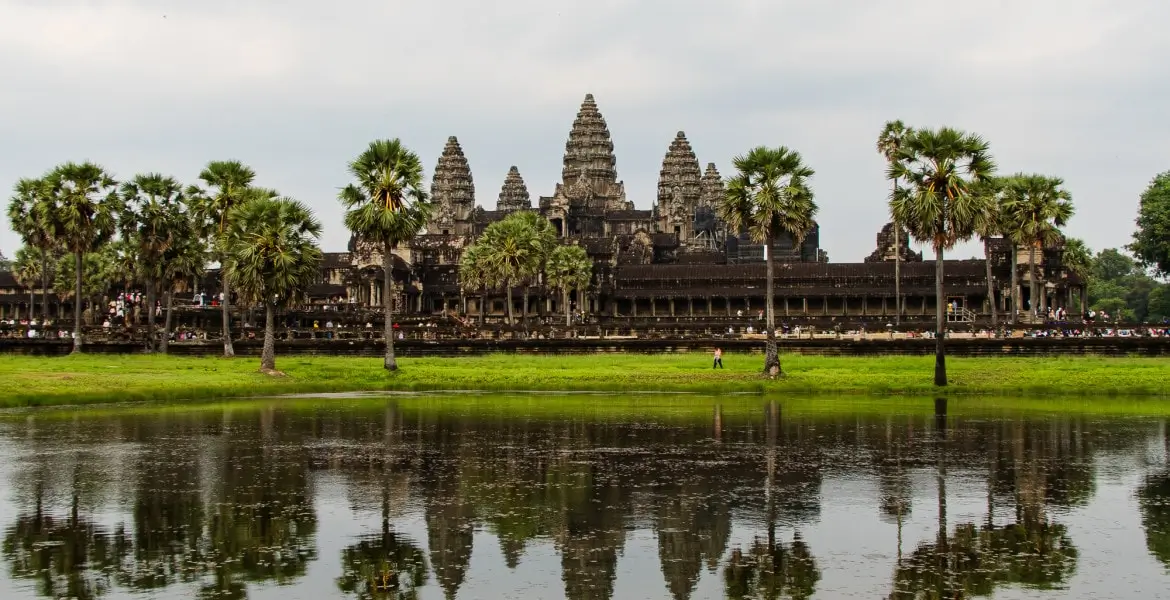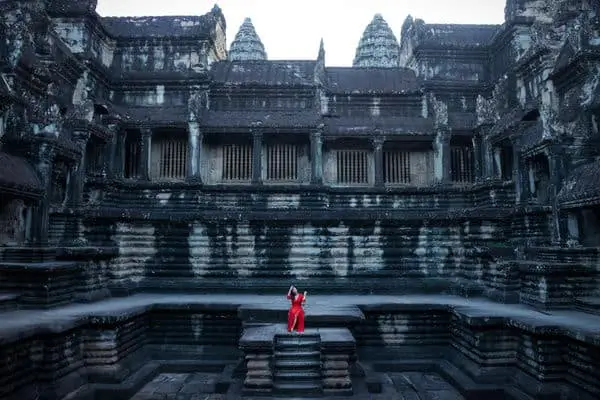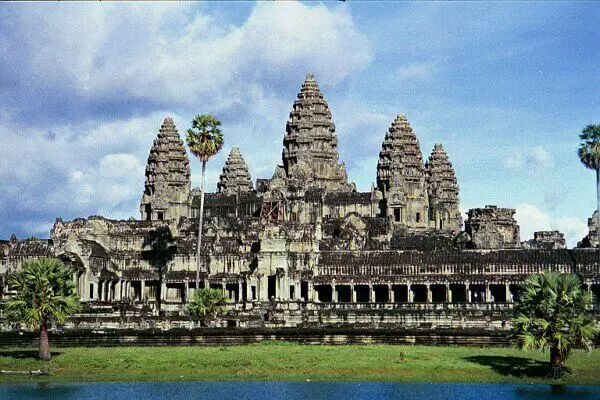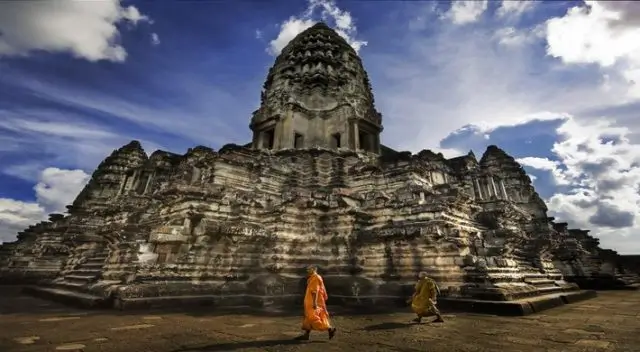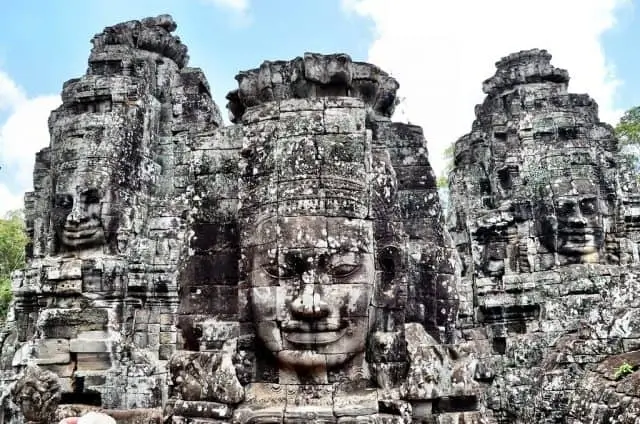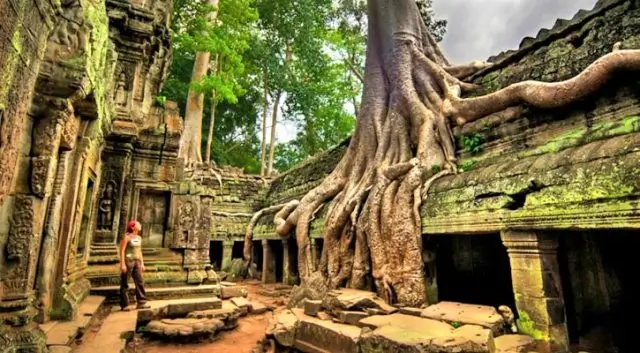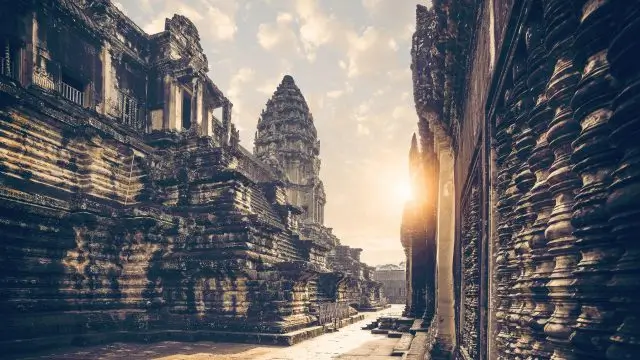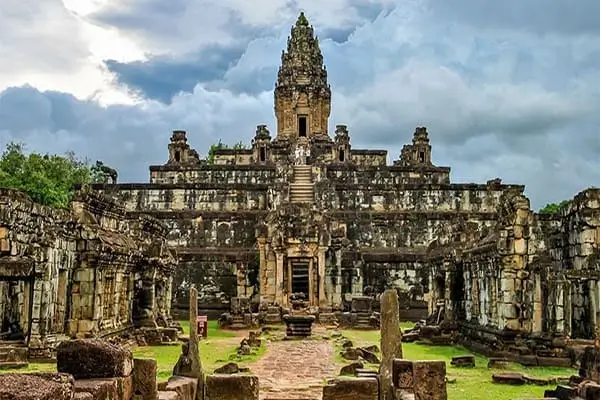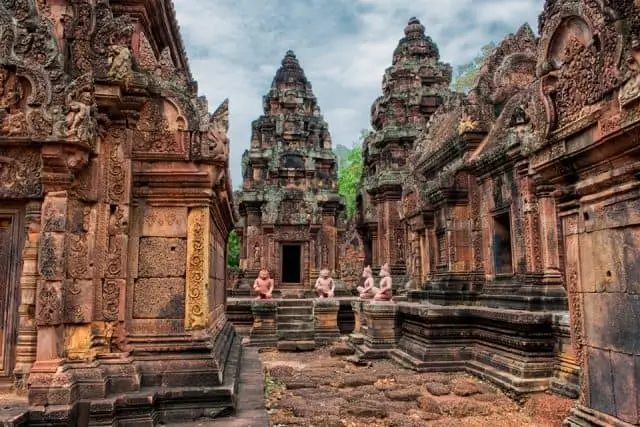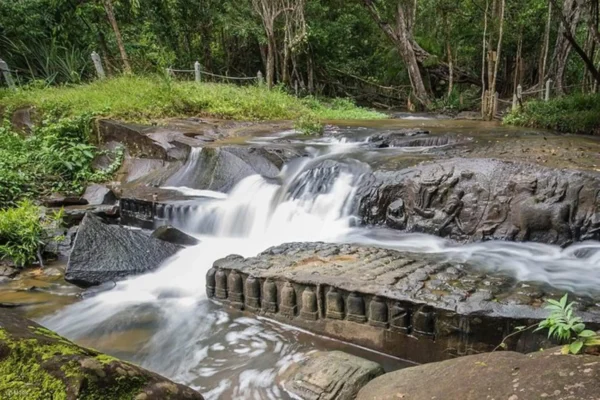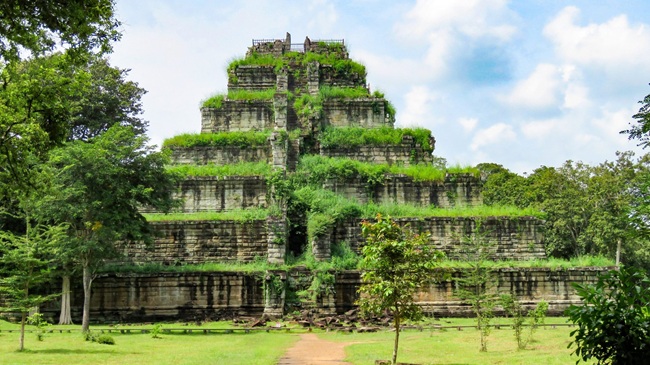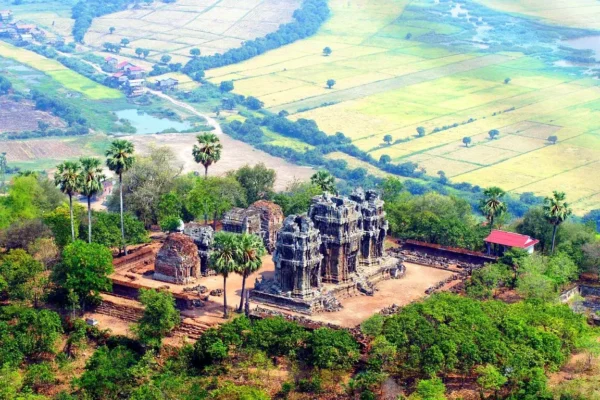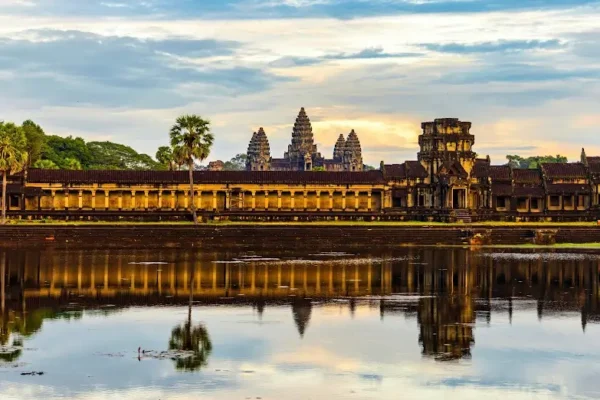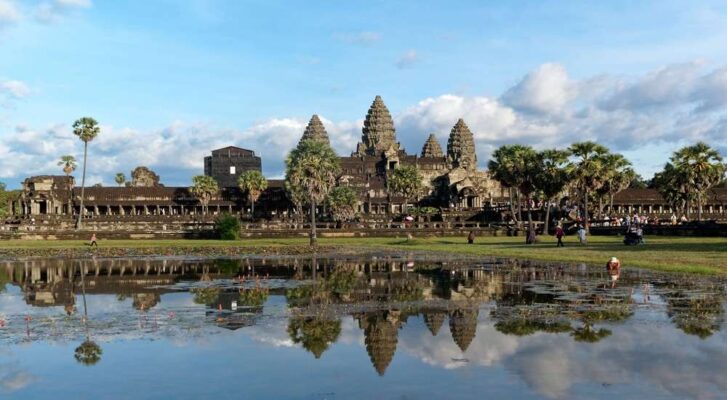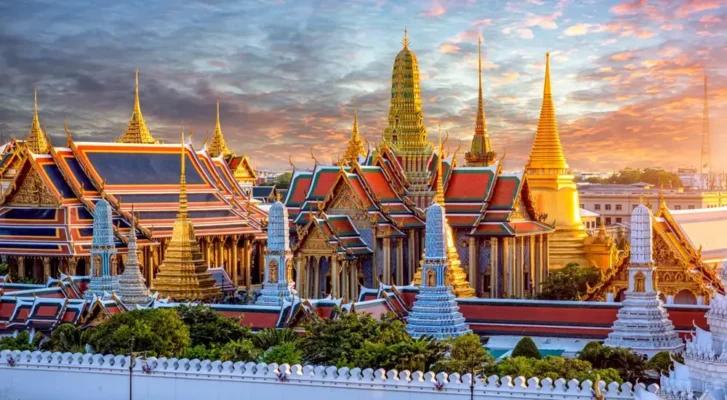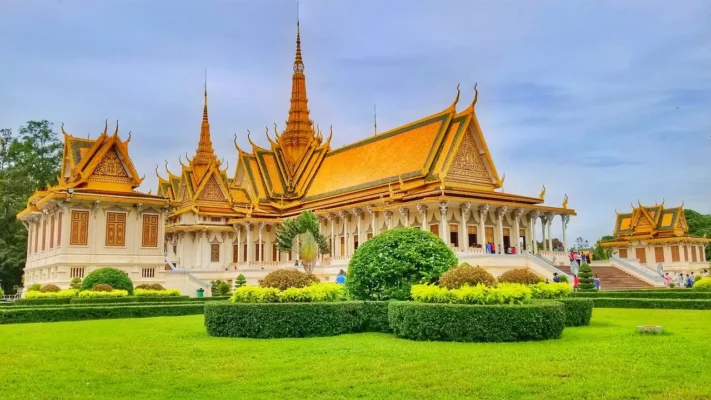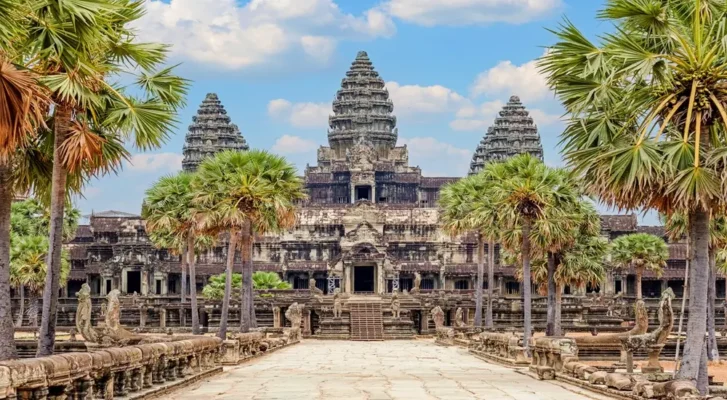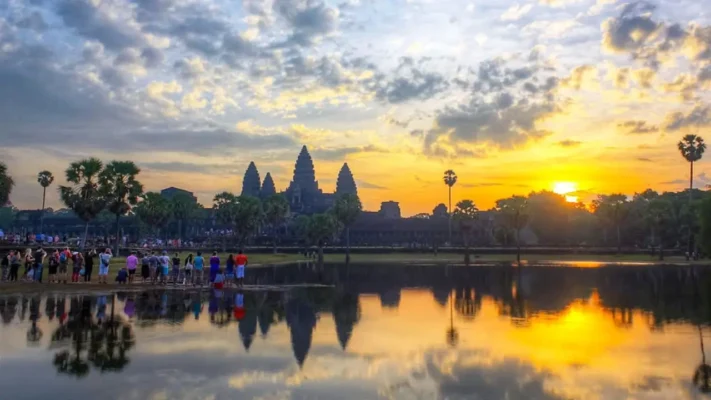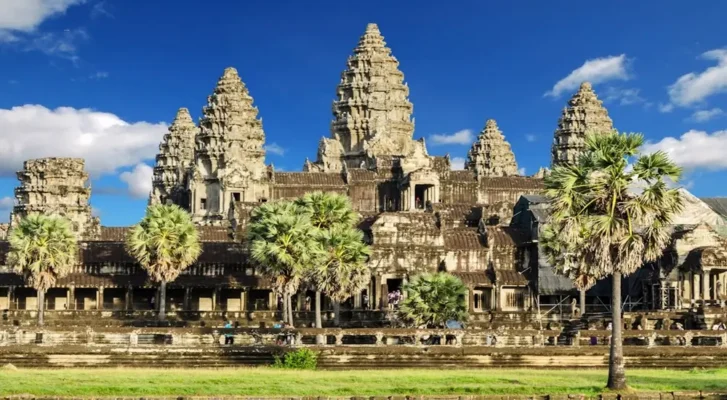Travel Guide
Angkor Wat Complex: Location, History, Entry Fee & How to Visit
Angkor Wat temple complex is one of the wonders of the world and also a very famous tourist destination in Cambodia. Every year, this place attracts thousands of visitors from all over the world to visit and explore. If you travel to Cambodia without visiting Angkor Wat, that means you have not visited Cambodia yet!
Introduction to the Angkor Wat temple complex
Angkor Wat temple complex is the most famous tourist destination in Cambodia. It is also one of the seven wonders of the world recognized by UNESCO. It can be said that this is the greatest heritage that the Khmer people left for posterity.
Located about 6 km north of Siem Reap, Angkor Wat temple was built by King Suryavarman II in the first half of the 12th century. The area of the entire complex extends over 248 square miles (400 km2), surrounding the temple is a deep and wide moat. Originally designed to worship Hinduism, but later due to the introduction and strong development of Buddhism, Angkor Wat was converted to worship Buddhism.
In ancient times, when the Khmer kings lost the battle and fled to Phnom Penh, the temple was gradually covered by the jungle and forgotten. It was not until 1860 that a French explorer named Herri Mouhot discovered and explored this majestic Angkor Wat temple.
The entire architectural complex is outstanding and distinctive in ancient sculpture. The towers, temples, reliefs and immense corridors are all made of stone blocks, stacked on top of each other in a very natural way, even on the dome roof. Stone decorations such as Buddha statues, dancers, warriors and lotus images illustrating the epics Ramayana and Mahabharata are all very vivid and soft.
The temple’s architecture is modeled after the great Meru Mountain of India, the highest central tower is 65m representing the legendary Meru Mountain, the five surrounding towers represent the five peaks of the mountain. The entire structure is built of sandstone and laterite. All these large blocks of stone are stacked on top of each other without any adhesive or reinforced concrete.
The Angkor complex is the pride of the Cambodian people. The two main temples are Angkor Wat (meaning the Temple of the Gods) and Angkor Thom (meaning the Temple of the Gods). These are two of the five most famous temples in the complex that you should visit first if you don’t have enough time to visit many places.
5 Mysterious Temples in the Complex
This Angkor complex, a particularly important tourist destination in Cambodia, is divided into 5 main areas with unique architecture that creates a magnificent scene that attracts tourists: Angkor Wat and Angkor Thom, Little Circuit, Big Circuit, Roluos group and peripheral temples.
Angkor Wat and Angkor Thom
Angkor Wat is the most magnificent temple in the entire complex with its main entrance facing west, facing the sunset. Angkor Wat has 398 rooms, connected by 1,500m of corridors. Above, 5 towers are connected by 3 architectural floors, of which the tallest tower is up to 65m, 4 side towers are 40m high. The road leading to the main gate of Angkor Wat is also made of stone blocks, 230m long, nearly 10m wide and 5m high above the lake surface on both sides of the temple.
The entire temple complex still retains ancient traces with many stone carvings such as giant reliefs, columns, doors, ceilings, walls, corridors, railings, roofs…, all exuding the extraordinary strength and skillful hands of the ancient Khmer people.
Angkor Thom is the territory of the ancient Khmer capital. Angkor Thom owns outstanding temples and architecture such as Bayon Temple, Baphuon Temple, Phnom Bakheng Temple on the hilltop, Elephant Terrace, Terrace of the Leper King and 5 large gates leading to Angkor Thom.
Among them, Bayon Temple gives visitors the most impressive feeling, they are completely conquered by its exemplary and lively beauty. The temple is made up of 50 stone towers. Its core is an architectural complex built in a terraced style with 16 medium-sized stupas, and many small towers connected together.
Little Circuit
Little Circuit – this area has the most famous temple, the “ancient” temple Ta Prohm, where nature blends with human construction. The branches and roots of ancient trees grow intertwined, covering the temple, creating a strange scene, attracting tourists to travel to Cambodia.
Big Circuit
Big Circuit – this area also has a structure called Preah Khan Temple similar to Ta Prohm Temple: stone walls interspersed with ancient tree roots. In addition, the Big Circuit also has an ideal place to watch the sunset, Pre Rup Temple, this is also a memorable experience that you should try when visiting Angkor Wat Temple.
Roluos Group
The Roluos Group is a remarkable group of ruins belonging to the ancient city of Hariharalaya, which is older than Angkor, of which the Bakong temple with its pyramidal architecture is the most prominent.
Peripheral Temples
The Peripheral Temples – this area is quite far from the central Angkor Wat complex but has some of the most unique and distinctive structures. Banteay Srei Temple is built mainly from red sandstone, a pigment added to the elaborate carvings on the walls, which can still be seen today.
Kbal Spean Ruins, also known as the site of 1000 lingas (linga is a symbol of worship of the Indus Valley civilization), with rocky outcrops lying under the surface of the stream in a square area in the middle of the forest.
Beng Mealea Temple is a ruin close to nature, with plants growing on the ancient architecture, creating a fresh but gloomy and ancient atmosphere.
Phnom Krom Temple is located on a hill overlooking the Tonle Sap Lake.
How Did the Khmer Build the Temples?
Scientists have recently discovered the unique method by which the ancient people-built Angkor Wat much faster than expected. It was originally thought that each block of stone was transported over a winding route of up to 55 miles (88km) over land, rivers and lakes. The arduous, laborious process of transporting each block would have taken at least five days: from the mountain to a river leading to Tonle Sap Lake. They would then be carried by boat to the Siem Reap River and then hoisted onto the construction sites at Angkor Wat.
Using satellite imagery, modern scientists have discovered that a 21-mile (34km) canal was dug to transport 1.6-ton blocks of stone from the quarry to Angkor in just 10 hours. When they surveyed the area, they found some remaining canals that still held water, while many others had disappeared over the years due to drying up or being eroded by the jungle.
The team also discovered large, square, sharp-edged stones at various locations along the canals, which may have fallen into the water during transport by raft or been brought ashore for some reason. The network of canals ran from a quarry at the foot of Kulen Mountain, where archaeologists discovered that the stones were the same type used to build Angkor Wat.
This discovery helps explain how a huge temple like Angkor Wat, built with 5,000,000 tons of stone in just 35 years, although it would have taken hundreds of years using the rudimentary technology available at the time.
How to Visit the Temples Complex?
The Angkor Temples complex consists of a thousand temples of different sizes built for various functions. Depending on your budget, schedule and interests, you could choose to do the small or big circuits. Tickets are sold based on the number of days you enter the complex.
- One day fee: USD 37 (suitable for small circuit)
- Three days fee: USD 62 valid for 10 days from the issue date (suitable for the large circuit)
- Seven days fee: USD 72 good for 1 month from the issue date (beyond the large circuit)
Interesting facts about Angkor Wat you may not know
- Angkor Wat translates to “City of Temples” or simply “Temple City”.
- Angkor Wat is the main reason for over 50% of international tourists to visit Cambodia. Cambodians are so proud of their architecture that it was placed on the Cambodian flag in 1850.
- Built in the early 12th century (between 1113 and 1150) Angkor Wat is the largest religious monument in the world.
- The Angkor Wat temple was originally built to honor the Hindu god Vishnu, not the current king.
- The sandstone, which is used to build Cambodia’s national monuments, weighs at least 5 tons and was transported from a quarry 25 miles away.
- Most of the money to restore Angkor Wat was funded by international funds. Only about 28% of ticket sales are returned to the temple.
- An Angkor temple called Ta Prohm – famous for its giant climbing tree that collapsed part of the temple – was used as a set for the blockbuster movie Tomb Raider. During the 7 days of filming there, the film crew had to pay $10,000 a day. Unfortunately, too many branches grew out of control and could collapse Ta Prohm, so many of them had to be cut down to prevent the temple from being damaged.
- Khmer bricks were held together with a colourless, plant-based paste, not mortar.
- Angkor Wat is unusually oriented to the west, a direction considered to be the direction of death in Hindu culture. What archaeologists and scholars do not understand is why the ancient builders chose to go against the “norms” of the time.

